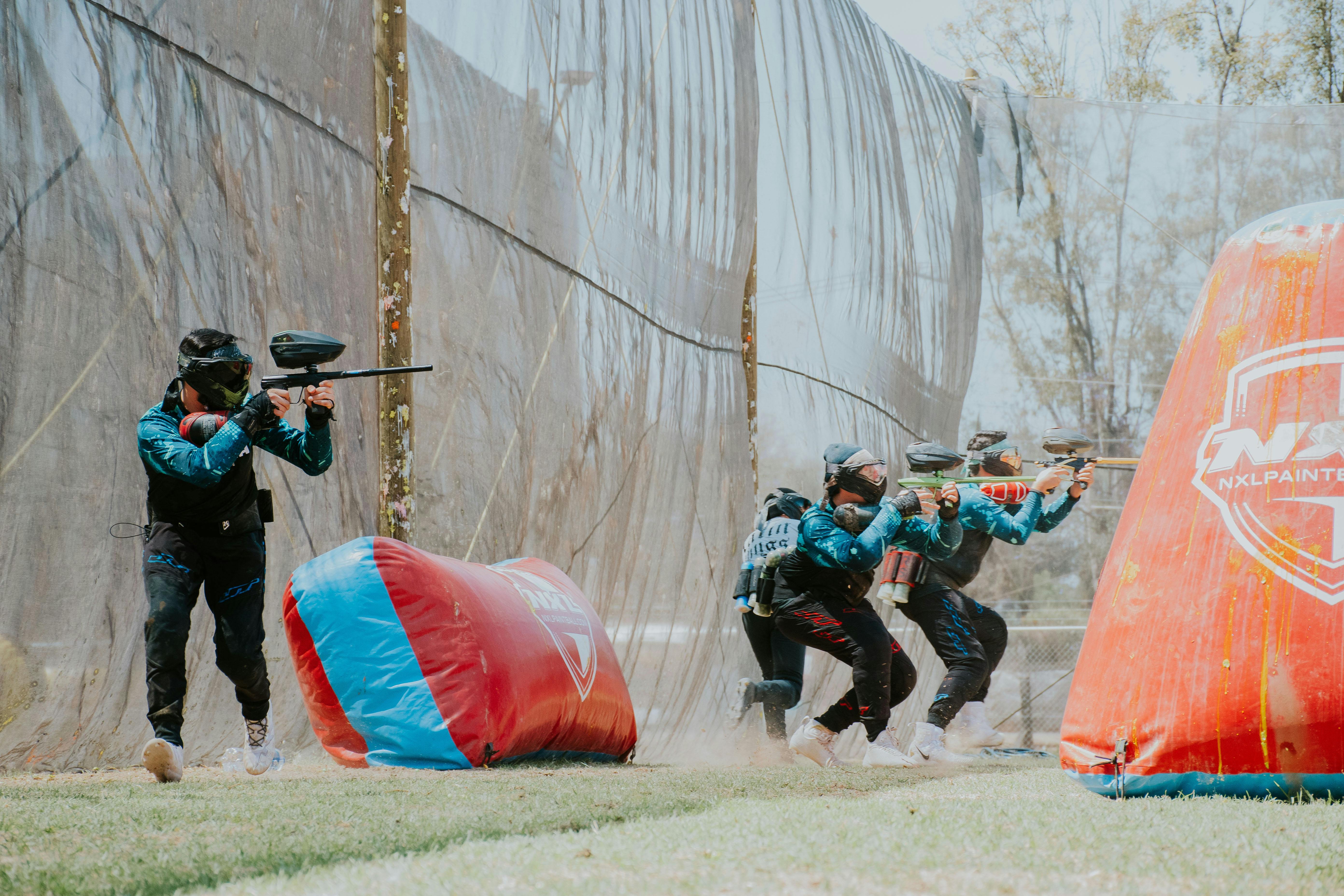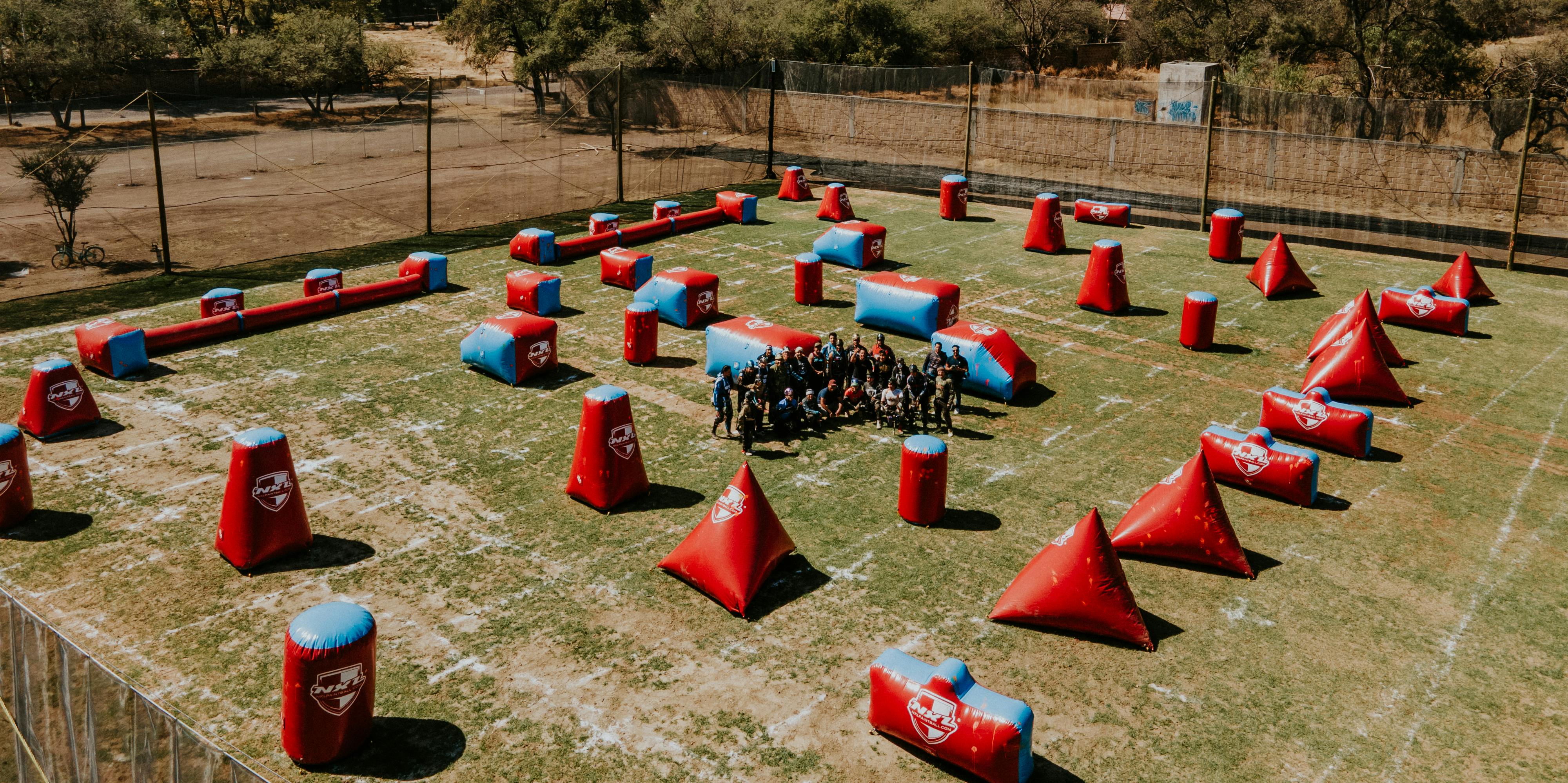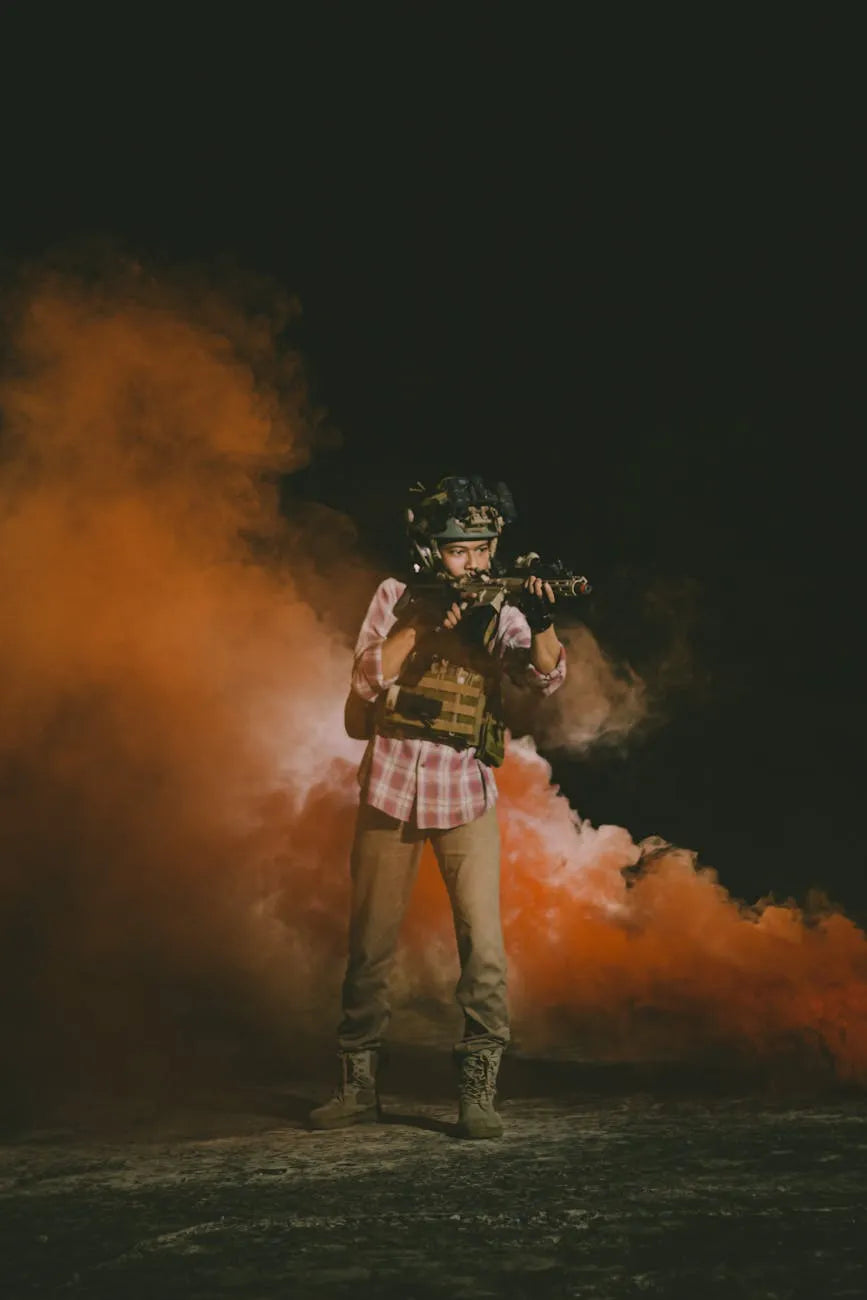Clear Vision 2025 Paintball Face Protection Glasses vs Inserts
Navigating paintball with less-than-perfect vision presents a common challenge. Should you wear your regular eyeglasses under your mask, or invest in prescription inserts? It's a question I wrestled with myself. The answer isn't always simple. It depends on safety, comfort, performance, and budget. Let's break down the options for effective paintball face protection.
Getting tagged out because you couldn't see clearly? That's happened to me. It's frustrating. It can even feel a bit dangerous. Finding the right solution changed my game entirely. We need to look at both approaches honestly.
The Glasses Under Mask Dilemma
Can You Wear Glasses Safely?
Wearing glasses under a standard paintball mask is technically possible. The relevant safety standard, ASTM F1776, permits it. It doesn't guarantee a good experience, though. Many masks aren't designed for the extra bulk of glasses.
- ASTM F1776-22: Allows eyeglasses with compliant Eye and Head Protective Devices.
- Reality: Poor fit can compromise the mask's seal around your eyes.
- Risk: A direct hit could potentially break glasses, risking eye injury.
I remember my early days, before competitive play. Rental masks pressed my glasses painfully against my face. Finding a mask labeled "Over The Glasses" (OTG) helps. They offer more internal space. But even OTG masks aren't a perfect fix for everyone.
- Discomfort: Pressure points on the nose and temples are common.
- Instability: Glasses can shift during quick movements or impacts.
-
Injury Data Points:
- Studies show up to 97% of paintball eye injuries are preventable with proper eyewear.
- Severe outcomes like ruptured globes (28% in one study) highlight the need for secure, reliable protection.
- While specific data on glasses breaking under masks is scarce, the potential exists. Replacing expensive glasses (average $200-$400+) is also a concern.
The Fogging Nightmare
Fogging is the bane of many paintball players. Wearing glasses under a mask often makes it worse. You essentially create two surfaces prone to condensation. Trapped moisture from breath and sweat clouds both your glasses and the mask lens.
- Reduced Visibility: Fog obscures targets and field awareness.
- Gameplay Interruption: Constantly stopping to wipe lenses is frustrating.
- Safety Hazard: Impaired vision increases the risk of trips, falls, or missing crucial game cues.
I learned this the hard way during the Pacific Rim Championships in 2021. The humidity was intense. My glasses fogged completely inside my goggles. Holding a key bunker became impossible; I couldn't track enemy movement.
The Consequence: An opponent slipped past unseen. We lost vital teammates. Trying to reposition, blinded by fog, I stumbled on uneven ground. Twisted my ankle. Game over for me, match lost for the team. It was a harsh lesson in the importance of clear vision.
-
Contributing Factors:
- Heat and humidity.
- Player exertion (heavy breathing, sweating).
- Poor mask ventilation exacerbated by glasses blocking airflow.

Exploring Prescription Inserts
How Inserts Tackle Fogging
Prescription inserts sit inside the mask, closer to the main lens. This design inherently helps combat fogging compared to glasses. There's less air volume trapped between corrective lenses and the mask lens. Airflow within the mask is generally less obstructed.
- Airflow Dynamics: Inserts allow mask ventilation systems to work more effectively.
- Surface Area: Fewer surfaces prone to fogging compared to glasses + mask lens.
- Anti-Fog Coatings: Many inserts, like quality mask lenses, utilize anti-fog coatings.
Think of it like double-glazed windows versus single panes. Thermal mask lenses already use this principle. They create an insulating air gap to reduce fogging. Inserts work *with* this system, rather than potentially hindering it like bulky glasses frames can.
-
Fog Comparison Factors:
- Glasses: More trapped air, obstructed airflow, two primary fog surfaces (glasses + mask lens).
- Inserts: Less trapped air, better airflow, potentially one primary fog surface (insert facing eye), often treated with anti-fog.
Comfort and Clarity Check
Beyond fogging, inserts offer significant comfort advantages. They eliminate the pressure points glasses create. No more arms digging into your temples or nose pads leaving marks. They feel more integrated with the mask.
- Reduced Pressure: Inserts don't physically press against your face like glasses frames.
- Stability: They typically clip or secure firmly inside the mask, reducing movement during play.
- Wider Field of View: Often less peripheral vision obstruction compared to glasses frames within the mask.
Vision quality is crucial. Most inserts use high-quality optical materials. Options often include polycarbonate (high impact resistance) or CR39 (excellent optical clarity). Lens choice can depend on your prescription and preference.
-
Materials:
- Polycarbonate: High impact resistance (safety standard), built-in UV protection. Lower optical clarity (Abbe value ~30).
- CR39: Better optical clarity (Abbe value ~58), often lighter. Can be coated for UV/impact resistance.
- Prescription Range: Inserts accommodate a wide range, including high diopters and astigmatism. Some systems handle up to +8 to -10 diopters or more. Bifocal/progressive options are available.
Here's a quick comparison:
| Feature | Glasses Under Mask | Prescription Inserts |
|---|---|---|
| Comfort | Often poor (pressure points) | Generally good (no direct pressure) |
| Stability | Can shift easily | Typically secure |
| Fogging | High potential, multiple surfaces | Lower potential, better airflow |
| Field of View | Can be obstructed by frames | Often less obstruction |
| Mask Seal | Potentially compromised | Usually unaffected |
| Safety Risk | Potential for glasses breakage | Minimal (behind mask lens) |

The Cost Factor: Inserts vs Glasses Risk
Breaking Down the Budget
Cost is always a factor. Using your existing glasses seems free initially. But consider the risk of damage. Replacing prescription eyewear isn't cheap. Inserts require an upfront investment. This includes the insert frame and the prescription lenses.
-
Option 1: Existing Glasses:
- Initial Cost: $0
- Potential Replacement Cost: $200 - $400+ per pair
- May require buying an OTG mask ($40 - $200+)
-
Option 2: Prescription Inserts:
- Insert Frame Cost: $30 - $120 (depending on brand/features)
- Basic Prescription Lens Cost: $40 - $100+ (single vision, higher for complex Rx/coatings)
- Total Initial Cost (Estimate): $70 - $220+
Here's a table summarizing potential costs:
| Item | Estimated Cost Range | Notes |
|---|---|---|
| Regular Eyeglasses | $200 - $400+ | Risk of damage/replacement |
| Basic Paintball Mask | <$40 | Unlikely suitable for glasses |
| OTG / Mid-High End Mask | $40 - $250+ | Better fit for glasses OR standard for inserts |
| Thermal Lens Upgrade | $10 - $60+ ($50+ typical) | Recommended for fog reduction (either setup) |
| Insert Frame | $30 - $120 | Universal or mask-specific |
| Insert Lenses (Basic SV) | $40 - $100+ | Varies greatly with Rx and features |
| Total Insert Setup | $70 - $220+ (Initial) | Plus cost of compatible mask |
Value Beyond Price
Comparing costs involves more than just the purchase price. Think about the value of clear, reliable vision during play. How much is avoiding fog-induced frustration worth? What's the value of preventing a vision-related mistake or injury?
- Performance: Clear vision directly impacts accuracy, awareness, and strategy.
- Enjoyment: Less time fighting fog means more time playing the game.
- Safety: Unobstructed, stable vision is crucial for navigating the field safely.
Investing in prescription inserts can be seen as investing in your performance and safety. It eliminates the variable of poor vision caused by ill-fitting or foggy glasses. For me, after the Pacific Rim incident, the value became undeniable. It wasn't just about winning; it was about playing effectively and safely. Paintball is supposed to be fun, not a blurry struggle against gravity and moisture. Falling is just embracing another side of Earth, ideally seeing where you'll land.
Compatibility and Finding Your Fit
Universal vs. Mask-Specific Inserts
Not all inserts are created equal. Some are designed for specific mask models. Others, known as Universal Prescription Inserts (UPIs), aim for broader compatibility. They use flexible arms or adaptable mounting systems.
-
Universal Inserts (UPIs):
- Pros: Fit many different mask brands/models (Oakley, Smith, Dye, Virtue, etc.). More flexible if you change masks.
- Cons: Fit might not be perfectly optimized for every single mask. May require checking compatibility lists or trying them out.
-
Mask-Specific Inserts:
- Pros: Designed for a perfect fit within a particular mask model (e.g., CRBN Zero system). Potentially very stable.
- Cons: Only work with that specific mask. Less flexible if you upgrade or change gear.
Choosing depends on your situation. If you love your current mask and plan to stick with it, a specific insert might be great. If you like trying different gear or want future flexibility, a universal insert is often a better bet. Research which brands are known for good compatibility.
My Journey to Clear Vision
My own path led me definitively to inserts. After the disastrous fogging incident and subsequent ankle injury, I knew wearing glasses wasn't sustainable for my level of play. I briefly tried contact lenses. They felt okay initially but became incredibly dry and irritating during long games, especially outdoors in Colorado's climate. Wind exposure made it worse. The fear of a lens dislodging mid-game was always there too.
- The Breaking Point: Realizing glasses hampered performance and contacts caused discomfort.
- The Search: Looking for a reliable, comfortable, fog-resistant solution.
- The Discovery: Finding prescription inserts online, specifically exploring different brands and technologies.
That's when I discovered Overo Glasses. Their prescription goggle inserts stood out. They weren't just another clip-in piece of plastic. The design seemed thoughtful. They emphasized features that directly addressed my pain points. The frame material (PC) promised durability. The lens material (CR39 standard option) offered the optical clarity I craved.
What truly sold me was the focus on practical usability. Overo inserts are designed for broad compatibility, fitting major goggle brands. This universality was appealing after seeing some players locked into specific systems. They also featured advanced anti-fog coating technology. Critically, I noticed something unique: adjustability. Being able to slightly shift the insert position up or down inside the goggle sounded like a game-changer for achieving that perfect, comfortable fit regardless of face shape or specific goggle model. This addressed a subtle issue I'd heard about where some universal inserts sat too high or low for optimal vision.
-
Overo Key Features (Why they worked for me):
- Adjustable Height: Fine-tuning the fit for comfort and optimal line of sight. A clear advantage over fixed-height competitors like Youzee or Sportrx.
- Universal Compatibility: Works across different mask brands, offering flexibility.
- Advanced Anti-Fog: Directly tackles the biggest frustration point.
- CR39 Lens Option: Prioritizes optical clarity.
- Durable PC Frame: Built for the demands of the sport.
- Reasonable Value: Priced competitively ($119.99) considering the adjustability and features compared to options like Youzee (starting $165) or the sometimes cumbersome process at Sportrx.
Trying the Overo inserts for the first time was a revelation. Clear vision, no pressure points, and dramatically less fog. It felt like seeing the field properly for the first time in intense conditions. This experience fueled my #ClearVisionCampaign. During a charity game in 2023, under the hot Colorado sun, glare and fog were issues for many. My Overo inserts, equipped with an anti-fog/anti-glare coating I'd helped test, kept my vision crystal clear. I could make plays others couldn't, spotting hidden opponents obscured by shadows and glare. It proved the tangible difference quality inserts make. Seeing the youth players benefit from clear vision reinforced my commitment.

Making the Right Choice for Your Game
Weighing the Pros and Cons
Choosing between glasses and prescription inserts for your paintball mask for glasses needs comes down to balancing factors. There's no single right answer for everyone. Consider what matters most to you.
-
Glasses Under Mask:
- Pros: No initial extra cost (if you already own glasses).
- Cons: High fog potential, discomfort, potential safety risk (breakage, poor seal), possible vision obstruction, may require expensive OTG mask.
-
Prescription Inserts:
- Pros: Significantly reduced fogging, improved comfort, stable fit, potentially better field of view, safer than glasses directly exposed.
- Cons: Upfront cost (frame + lenses), requires compatible mask, another item to manage.
For casual play, maybe once or twice a year, trying glasses with a good OTG mask and anti-fog might suffice. For regular players, especially those playing in varied conditions or competitively, the benefits of prescription inserts often outweigh the initial cost. They provide a more reliable, comfortable, and ultimately safer visual experience.
Playing Without Limits
My journey from struggling with foggy, uncomfortable glasses to playing with the clarity and confidence provided by Overo inserts transformed my relationship with paintball. It removed a significant barrier. Clear vision allowed me to focus on strategy, skill, and the sheer fun of the game. It let me play to my potential without constantly battling my own equipment.
- Empowerment: The right vision solution lets you play freely.
- Focus: Concentrate on the game, not on whether you can see.
- Enjoyment: Maximize the thrill of paintball without visual limitations.
Finding the best paintball mask for glasses solution is about enabling your best game. Whether it's inserts or carefully managed glasses, prioritize clear, safe vision. Don't let correctable sight issues hold you back from enjoying this intense, strategic sport. For me, Overo provided that key. It allowed me to redefine my limits on the field.
Frequently Asked Questions
Can I wear glasses under a paintball mask?
Yes, you can wear glasses under a paintball mask, but it often leads to issues such as discomfort, fogging, and compromised safety. Opting for OTG (Over The Glasses) masks can alleviate some problems, but may still not provide an ideal solution for all players.
What is the main advantage of prescription inserts over glasses under a mask?
Prescription inserts provide improved comfort, reduced fogging, better stability, and uncompromised safety compared to wearing glasses under a mask. They integrate closely with the mask design, preventing many of the issues associated with glasses.
Do prescription inserts work with any paintball mask?
Some inserts are mask-specific, providing a perfect fit for certain models, while Universal Prescription Inserts (UPIs) are compatible with a wide range of masks. Ensure compatibility with your mask before purchasing.
Are prescription inserts costly?
Prescription inserts involve an upfront cost, including the insert frame and lenses. The price typically ranges between $70 and $220+, but they can be more cost-effective long term when considering the potential replacement costs of damaged glasses.
How do prescription inserts prevent fogging?
Prescription inserts work with the mask's ventilation system, reducing trapped air and fog-prone surfaces. Many are treated with anti-fog coatings, ensuring clearer vision during gameplay.
References
- Defy Paintball - Masks Collection - Explore a wide collection of paintball goggles and masks.
- Paintball Online - Woodsball Masks - Options for woodsball paintball masks.
- Etsy - Custom Airsoft & Paintball Full Face Mask - Unique full-face mask designs for paintball and cosplay.
- Temu - Outdoor Paintball Masks - Cyberpunk masks and full-face paintball helmets.
- Lone Wolf Paintball - Push Unite Tan Camo Mask - Advanced camo masks for serious players.



Share:
5 Keys to All Weather Paintball Gear Dominance 2025
5 Reasons Anti Fog Goggles Are Crucial for Paintball 2025